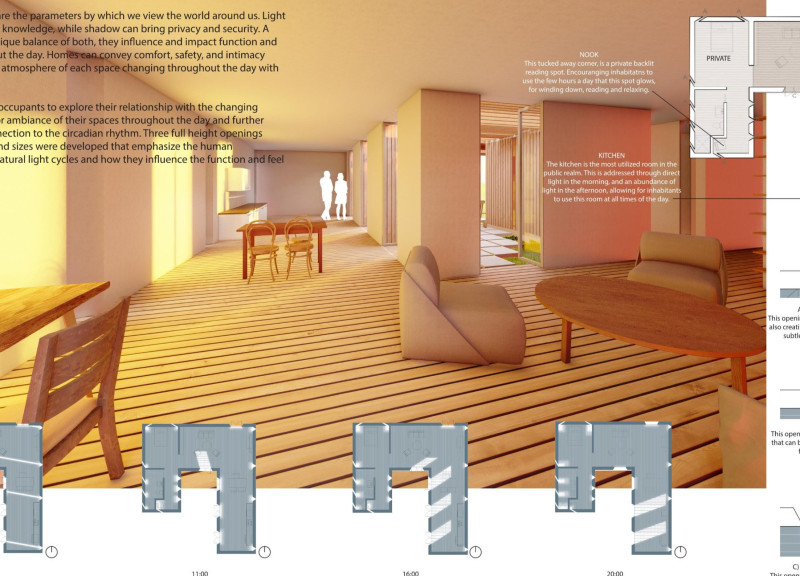5 key facts about this project
The project represents a fusion of contemporary design principles with local architectural traditions, highlighting an respect for the environment and the well-being of its users. It functions as a multi-use space, accommodating a variety of activities such as collaborative work, community gatherings, and cultural events. This versatility is essential in today’s urban environments, where buildings are increasingly required to adapt to diverse uses and changing social dynamics. The careful arrangement of spaces within the building facilitates seamless transitions and encourages an interactive experience among users.
Key elements of the design include a thoughtful layout that prioritizes natural light and ventilation. Large windows and strategically placed openings create an inviting atmosphere, while enhancing the connection between the interior and exterior landscapes. The spatial organization promotes fluid movement and interaction, fostering a sense of community well-being. Open areas are complemented by intimate spaces, allowing individuals the opportunity to collaborate or find a moment of solitude when needed.
Materiality plays a crucial role in the architectural expression of this project. The use of locally sourced materials not only supports sustainability but also reinforces a sense of place. Natural stone and wood are utilized throughout the structure, adding warmth and texture. Glass features prominently, facilitating visual links between different areas of the project while offering expansive views of the surrounding environment. The careful selection of materials reflects considerations of durability and maintenance, ensuring the building will thrive over time.
Unique design approaches are evident in several aspects of the project. The implementation of green roofs and living walls demonstrates a commitment to environmental sustainability and biodiversity. These elements not only contribute to the ecological performance of the building but also offer inhabitants a visually engaging experience that changes with the seasons. Additionally, innovative energy-efficient systems have been integrated, reducing the building’s carbon footprint and operational costs.
The exterior of the structure draws attention through its harmonious proportions and materials palette. The façade expresses a dialogue between solid and void, creating a dynamic interplay of light and shadow throughout the day. This thoughtful manipulation of form enhances the project’s aesthetic while responding to environmental conditions, such as prevailing winds and sun exposure. The design’s sensitivity to its surroundings is evident, resulting in a building that feels both modern and grounded in its local context.
Accessibility is another crucial consideration within this architectural design. Thoughtful pathways and connections ensure that all users can navigate the space without barriers, promoting inclusivity. The layout encourages social interaction while providing areas for contemplation and individual reflection. Such inclusive design approaches contribute to the project’s overall mission to serve as a community hub.
As one explores the project presentation, there are numerous architectural plans and sections that provide further insights into the design process and thought behind this undertaking. Examining the architectural details reveals how each element contributes to the cohesive vision of the project, offering clarity on the ambition and personal narrative embedded within the design. By delving into these architectural illustrations, one can appreciate the complexity and nuance of the thought process that guided the project’s development.
This project showcases a commitment to thoughtful design that prioritizes both functionality and community engagement. Its architecture and design principles serve as a model for future developments, illustrating how buildings can harmoniously coexist within their environments while addressing the needs of those who inhabit them. For a more in-depth understanding of this project and its architectural ideas, I encourage you to explore the architectural presentation further.






















